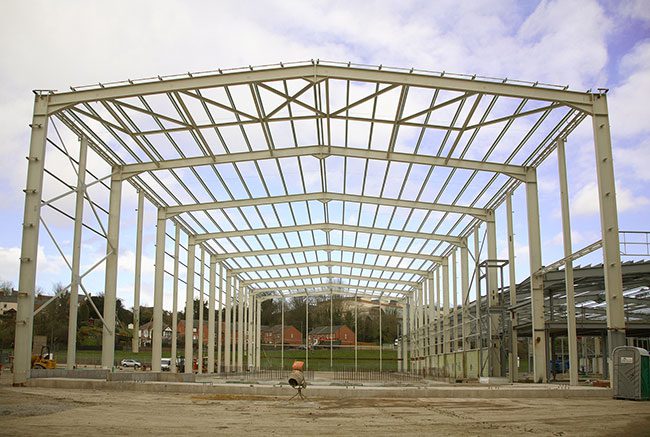Fabricating Structural Steel Trusses

The truss of a structure is its main framework, consisting of posts, rafters, struts, or bridges. Trusses typically contain of five or more triangular units, using straight components connected at joints, or nodes.Trusses can be made of different materials and take a variety of architectural shapes.
Many structures rely on steel trusses for enhanced strength, durability, and reliability. Steel is also one of the most flexible and versatile materials for fabrication.
Why Choose Steel Trusses?
During a construction project, builders have a choice between wooden or steel trusses. While wooden trusses are commonly used in residential applications, steel is the choice for most modern builds. Wood trusses are susceptible to shrinkage as the moisture content of timber evaporates. Waiting for this process can delay a project and cause gaps at joints. Timber trusses are also at risk of termite infestations, wood rot, and warping.
Steel trusses don’t carry any of the issues of wooden trusses. Thanks to modern advances, exceptional lightweight steel frame technology is available to the masses. Computer-aided engineering enables metal fabricators to create standard and custom trusses with incredible speed, accuracy, and craftsmanship. Builders can use steel trusses in poor weather, eliminating expensive downtime. Steel will not warp, shrink, or change. Pre-constructed steel trusses can reduce costs and labor time, since workers only take care of straightforward assembly.
Engineers use steel trusses in a variety of applications, as this material complies with high industry standards. Museums, institutions, commercial buildings, outdoor markets, aircraft hangars, auditoriums, sports stadiums, and many other buildings rely on steel trusses for long life span and superior structural integrity. Builders use steel trusses to carry heavy loads or as transfer structures. Trusses come in a wide range of types, shapes, and sizes, with differing overall geometry for specific applications.
The Fabrication Process for Steel Trusses
Steel truss fabrication is a complex process that takes special skills, tools, and techniques to form specific structures and products. Metal fabricators create steel structures in three main stages: cutting, forming, and assembly. Fabricators use several tools to cut the steel of a truss, including high-tech equipment such as plasma cutters, lasers, and water jets. Saws create straight cuts, while lasers and plasmas are reserved for more complex shapes and curves. The metal fabricator punches holes using high-pressure notches.
Once the fabricator cuts the metal into the correct shape, the forming process begins. To form trusses, fabricators use both press baking and rolling. These techniques allow for an enormous range of metal thicknesses, sizes, and shapes for versatile applications. Standard trusses use a series of triangles. During the forming process, fabricators create the correct truss type for its purpose. Most roof trusses, for example, use C-shaped metal studs.
Assembly is the final process. The manufacturer will need to know the truss type, location, wind exposure, span, desired roof slope, and more to correctly assemble and join the steel. This process includes welding pieces together, bringing the final product together to serve its intended purpose as a truss. There is specialized software the fabricator will use throughout the design and construction process, to meet the builder’s needs. An experienced truss fabricator can create optimal trusses – those that are as lightweight as possible without compromising structural stability. They must also meet stringent building compliance codes.
Custom Structural Steel Trusses
Builders use custom metal fabrication to create many structural steel trusses. Custom fabrication gives a build more aesthetic beauty, as well as structural integrity. Custom trusses adapt to unique needs and purposes, using special cutting and forming techniques to build exactly what a specific project demands. For a free quote, contact Swanton Welding.

